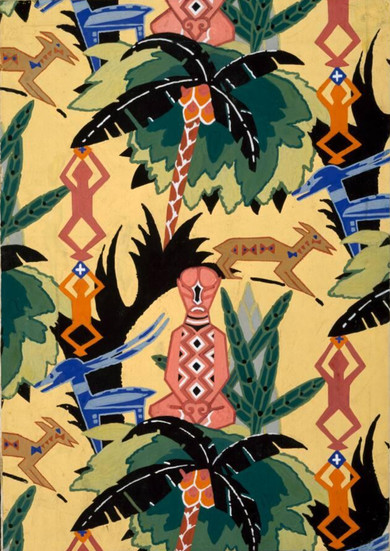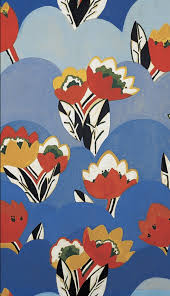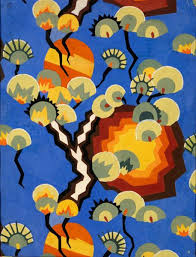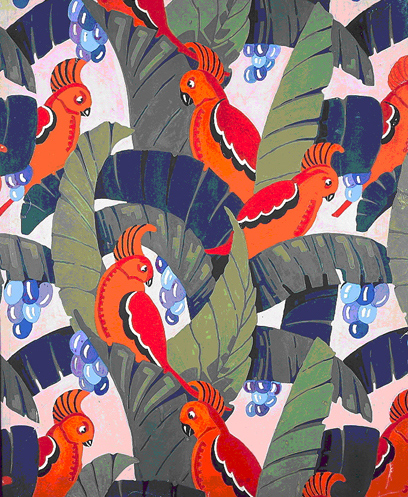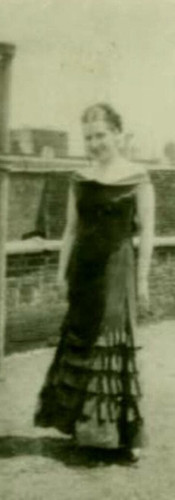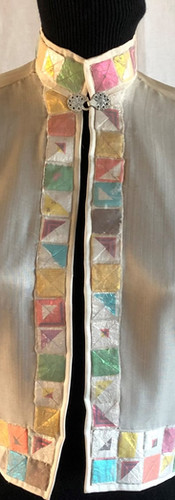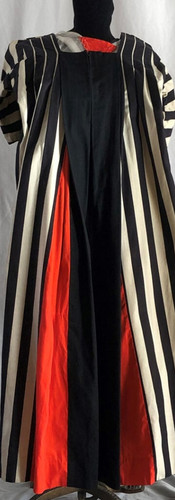This November: Textiles
- lindsey4824
- Nov 6
- 7 min read

The common thread for all of November’s featured children’s book creators is textiles.
Roger Duvoisin, Lois Mailou Jones, Esphyr Slobodkina, and Ashley Bryan all designed or used textiles as part of their careers and artistic practice.
Join us this month for Story Hours (ages 3-7) and our adults-only Let’s Take a Dive program to learn more about these creators and celebrate their inspiring work.
Roger Duvoisin (1900-1980)

Roger Duvoisin was a multifaceted artist who was born in Switzerland. He studied and lived for many years in France and ultimately moved to the United States, where he gained citizenship.
Duvoisin went to art school in Paris. His first jobs were as a muralist and backdrop painter for theaters. For a short time, Duvoisin managed a French pottery plant, after which he designed textiles in Lyons and Paris. In 1927, a job offer with Maillinson’s Silk Company brought him to the United States. He moved to New York with his wife, fellow Swiss artist Louise Fatio. A few years later, Maillinson’s went bankrupt, leaving Duvousin and friends who were also French artist emigres jobless in the middle of the Great Depression. Duvoisin scrambled to find work creating advertising and commercial art, painting murals, and more.
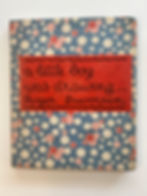
His children’s book career started in 1932 with the publication of A Little Boy Was Drawing, a dreamy tale he wrote for his own son about a child using his imagination to world-build.
Duvoisin illustrated and Fatio wrote the children’s book The Happy Lion in 1954, which became a series of ten books that followed the goings on of the titular lion.
Duvoisin’s illustrations for Alvin Tresselt’s White Snow, Bright Snow, published in 1947, won the Caldecott Medal. The two collaborated on over a dozen children’s books, and their 1965 book Hide and Seek Fog received a Caldecott Honor. Duvoisin’s books are emblematic examples of mid-century modern children’s book illustration.
Looking at Duvoisin's illustrations, he has a particular talent for creating patterns and textures which undoubtedly was informed by his work as a textile designer.

During this time, color printing was very limited. Duvoisin developed a technique using different cellophane overlays and could build up a collage effect by using multiple layers creating intricate results.
Whether Petunia the goose, Veronica the hippo, or Donkey-Donkey, Duvoisin had a particular talent for creating original and sympathetic animal protagonists. His skills as a designer, illustrator, and writer resulted in cohesive and impactful children’s books.
In addition to children’s books, Duvoisin created art for UNICEF cards as well as front covers and spots for The New Yorker.
Before his death in 1980, Duvoisin wrote and illustrated more than 40 children’s books, and illustrated another 140 books written by others.
“A beautiful book is a beautiful object which the child may learn to love.” – Roger Duvoisin
Lois Mailou Jones (1905-1998)

Lois Mailou Jones is primarily remembered as a prominent artist and painter.
She grew up in Boston and also spent a significant amount of her childhood at her family’s house on Martha’s Vineyard. Both of her parents encouraged her to draw and paint. Her mother was a cosmetologist and hat designer and maker. Her father was the superintendent of an office building and attended night school, eventually becoming the first African-American to earn a law degree from Suffolk Law School.
Jones would break her own barriers when she became the first African American to graduate from Boston’s School of the Museum of Fine Arts, and she did so with honors.
Her work with textiles began while she was still in high school. She apprenticed noted costume designer and instructor at Rhode Island School of Design Grace Ripley. During this time, she began experimenting with African mask influences and created costume designs for the Denishawn School of Dancing and Related Arts, the first dance academy in the United States to produce a professional dance company.
After graduating from the School of the Museum of Fine Arts, Jones received her graduate degree in design from the Design Art School of Boston in 1928. Afterward, she worked as a textile designer for F.A. Foster Company in Boston and Schumacher Company in New York.
Jones quit fabric design and focused on the fine arts after a decorator told her that a “coloured girl” could not have produced her sophisticated designs. She began teaching alongside her prolific personal painting practice, which continued for the duration of her life. Jones’ work is often associated with the Harlem Renaissance, and she collaborated throughout her career with the likes of Langston Hughes and Aimé Césaire.
Throughout her career she felt it was important to create “proof of the talent of Black artists.” Jones began a 47-year teaching career at Howard University in 1930. At the same time she freelanced as an illustrator, primarily for the Black-owned-and-operated Associated Publishers. This work would make her one of the most prominent Black children’s book illustrators of her era.

In 1940, Gladiola Garden: Poems of Outdoors and Indoors for Second Grade Readers – written by educator, librarian, author, and poet Effie Lee Newsome – was published. Jones created the book’s whimsical black and white illustrations of children playing outdoors, vegetables in clothes, and insects in concert with woodcut prints.
Lois died in 1998 at age 92, leaving an extensive body of work that is featured at institutions including the Smithsonian American Art Museum, The Metropolitan Museum of Art, The National Museum of Women in the Arts, and many others.
Espyhr Slobodkina (1908-2002)

Esphyr Slobodkina was a Russian-American abstract artist and children’s book creator. Her contributions to the United States’ avant garde and feminist art movements in the 20th century are unparalleled, and she was one of the founders of the American Abstract Artists group.
Beyond the fine arts, Slobodkina’s creative career included clothing and apparel design, furniture making, interior decorating, and sculpting.
“I just happen to be a very natural person, untrammelled by artificial, arbitrary rules of the games people, in my case people of ‘Art Circles’ play. Frankly, I never gave a damn what people thought. As a result of that I have always painted, sculpted, constructed, made collages, wall hangings, dolls, books, clothes, furniture, ‘serendipographs,’ glass sandwiches,’ etc. etc. and all at the same, or approximately the same time.” – Esphyr Slobodkina
Slobodkina was born in the Russian Empire in 1908. Her affinity for collage began when she was a child, and illness kept her bed-ridden in a weakened state and isolated from her siblings. She began cutting up old colored, black, and white paper into different shapes and pasting them into designs to amuse herself.
When she was nine years old, the Russian Empire’s unstable political environment was no longer safe for her family, who were Jewish, and they relocated to what was known at the time as Manchuria (present day China).
Slobodkina learned dressmaking and millinery from her mother, an accomplished seamstress, and worked as an assistant in her mother’s dress shop from age 11 through 18.
“Tying bows, arranging loops, making up designs for the embroidery gradually became my specialty,” Slobodkina recalled. “With increasing frequency I was being called in to give my opinion of this or that detail. It was amusing because I was still so young but the ladies liked it, and I wasn’t too shy to speak my mind.”
In 1928, Slobodkina immigrated to the United States, where she enrolled at the National Academy of Design in New York City. During the Great Depression she worked as an assistant dress designer at a shop on 7th Ave, and as a designer and foreman at an experimental textile printing shop in Paterson, New Jersey.
Clothing Slobodkina created including a bolero with candy wrapper trim. She was a pioneer of recycled fashion. (Images from www.esphyrslobodkina.org)
It wasn’t until 1938 when Slobodkina met Margaret Wise Brown — author of Goodnight Moon and longtime children’s book editor — that she entered the children’s book publishing world. The same year of their meeting, Slobodkina did the illustrations to accompany Brown’s text in their first book together, The Little Fireman. In 1940, Slobodkina published her first solo book, Caps for Sale, for which she is best known.

Before her death in 2002 at age 92, Slobokina created more than 20 children’s books.
Her artwork is part of the collections in many museums including the Metropolitan Museum of Art, the Smithsonian American Art Museum, The Whitney Museum of American Art, The Sheldon Museum of Art, and The Saint Louis Art Museum.
Ashley Bryan (1923-2022)

Ashley Bryan was an accomplished visual artist, illustrator, teacher, and writer. His choice of creative media ranged from paints and pencils to wood prints, puppetry, and stained glass creations. Bryan was born in Harlem, New York, in 1923. His father was a greeting card printer and bird enthusiast, keeping dozens of pet birds in their home. Bryan recalled his childhood as being filled with art and music.
In 1939, Bryan was accepted to attend Cooper Union in New York after being rejected from other art schools because of his race. Cooper Union practiced a blind admissions process, reviewing and accepting applications without knowing a student’s race or gender. Bryan was pulled from college just before graduating when he was drafted into a segregated unit in the U.S. Army during World War II. He was able to graduate from Cooper Union upon returning and then attended Columbia University in New York to study philosophy through the GI Bill. He later lived in France for three years and then studied in Germany on a Fulbright scholarship.
In 1946, Bryan illustrated Lorenz Graham’s poetry collection How God Fix Jonah, using woodcut engravings. Upon returning to Cooper Union from the war, Bryan created illustrations for the 1950 edition of Richard Wright’s novel Black Boy.
Throughout the 1960s, he illustrated some collections of folktales and poems, but it wasn’t until the ‘70s that he began to actively write and illustrate stories for children. In his lifetime, he published over seventy books. His first written and illustrated work, The Ox of the Wonderful Horns and Other African Folktales, was published in 1971 and republished in 1993. This story and many of his other titles are retellings of traditional African folktales. In 2004, Bryan published Beautiful Blackbird, which is featured as an exhibit at The Rabbit hOle.

Using textiles and found materials like shells, sea glass, and driftwood, Bryan created many puppets, giving each a name and a unique poem.

Bryan’s focus was to recapture the spirit of the original stories or songs so that the person reading it would feel the presence of the storyteller. He was recognized many times throughout his career with multiple Coretta Scott King Honors and Awards and a Newbery Honor, and he was a finalist for the Kirkus Prize for Young Readers' Literature. Bryan visited Maine regularly throughout his adulthood, ultimately retiring on Little Cranberry Island in the late ‘80s, where his home and studio are now preserved by the Ashley Bryan Center.

